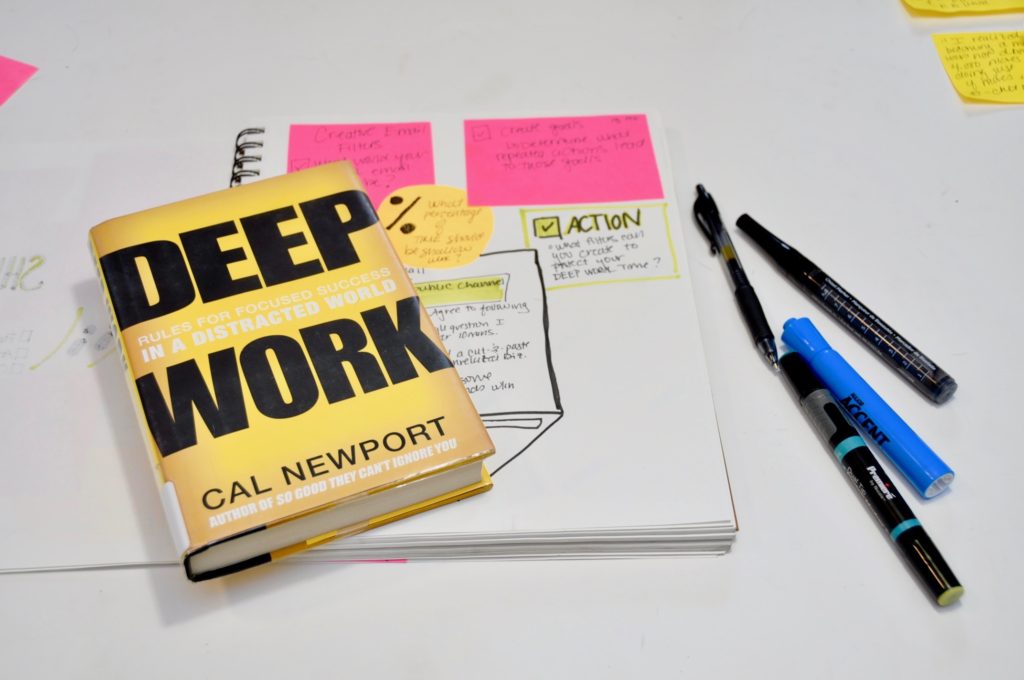How to Find New Ways to Advocate for Art Education

I’ve spent a lot of time reading books about Art Education, education, and creativity.
I’ve also learned that it’s important to read books from other genres as they provide new perspective and often help me to generate even more ideas.
Recently, I’ve used stories from Joyful and Hit Makers in my online art classes. ( While neither book is specifically about art, they both have great information related to art history and aesthetics)
I applied skills and techniques from Deep Work to help me and my students better manage time and hit due dates. And I am currently reflecting on ideas from Hit Makers about how to advocate for Art Education in new and impactful ways.
Megan and I started Tractionable because we believe that there is a lot that we can learn and apply from books. We also know that it can be hard and take time to create the connection between what you read in a book and how to bring that into your life.
Hit Makers explores why some ideas and products become “Hits” and why others never see the light of day.
“At a certain level, exposure matters more than quality.” (p.37)
While I do believe that quality teaching and learning matter, what I take from the above is a challenge to tell the story, the WHY behind Art Education.
As teachers we’re good at displaying student work, and that’s important. But the people that you’re working to influence often don’t understand the learning and discovery behind the “pretty, or even not so pretty, picture.”
“People don’t remember songs for the verses. They remember songs for the chorus. If you want to make something memorable, you have to repeat it. “
~Hit Makers
Many art teachers aren’t sure what they’re classroom is going to look like in the fall, if they’ll have one, or if they’ll be on a cart. While I don’t know the answers to these questions, what I do know, is that it’s important not to sit back and wait for someone else to make the decision for you. This is a chance for you to lead, for you to use your ability to problem solve and think creativity and for you to begin to work towards providing solutions for how art education happens in the time of COVID.
There are many steps to taking action, we’re going to start by getting really clear about why Art Education matters, and make sure that you’re informing others.
Let’s take Action.
- In 1-3 sentences why is Art Education important?
- Create a list of 3 ways that you’ll share why you think Art Education is important with your students.
- Create a list of 3 ways that you’ll share why Art Education is important with parents.
- Create a list of 3 ways that you’ll share why Art Education is important with other teachers.
- Create a list of 3 ways that you’ll share why Art Education is important with administration.
- Create a list of 3 ways that you’ll share why Art Education is important with the community.
Why do I believe Art Education Matters?
Art Education serves as a vehicle for students to learn visual communication. It helps students learn how to problem solve. Art guides students to look at, reflect, and respond to the world from a variety of perspectives.
Art is a learning tool.
As a society we already know and tend to agree that we don’t all learn and process information the same way. Some students are going to better understand critical thinking through writing, others through drawing, and some through numbers. When we remove an entire learning tool, we need to acknowledge that is what we’re doing.
When administrators, school boards, and governing bodies remove art, they must admit that they aren’t simply removing coloring books (that is not what art education is). Instead, know that when art is removed from education, a tool that helps students process, that gives them hope, connection, and expression is being removed. When quality art education is pushed to the sidelines and replaced with further testing, we must be prepared to live in a culture that no longer knows how to think, ask questions, or solve hard problems.
Designer Ray Eames responds in a letter from September of 1959: ( read more)
“I have a strong feeling that in the secondary school the role of the Fine Arts Department, and the Industrial Arts Department, is not to produce painters or designers, but rather to act in the role of a conscience with discipline to counteract the general tendencies to specialize, point up, develop, and capitalize the relationships of the various disciplines, and to be the constant watchdog of quality at all levels.”
To finalize today’s action item, we’ll take a technique from Deep Work and commit to a specific amount of time to focus writing your why, and creating a plan for how you’re going to share. Set a timer for 30 mins and see how much you can accomplish.